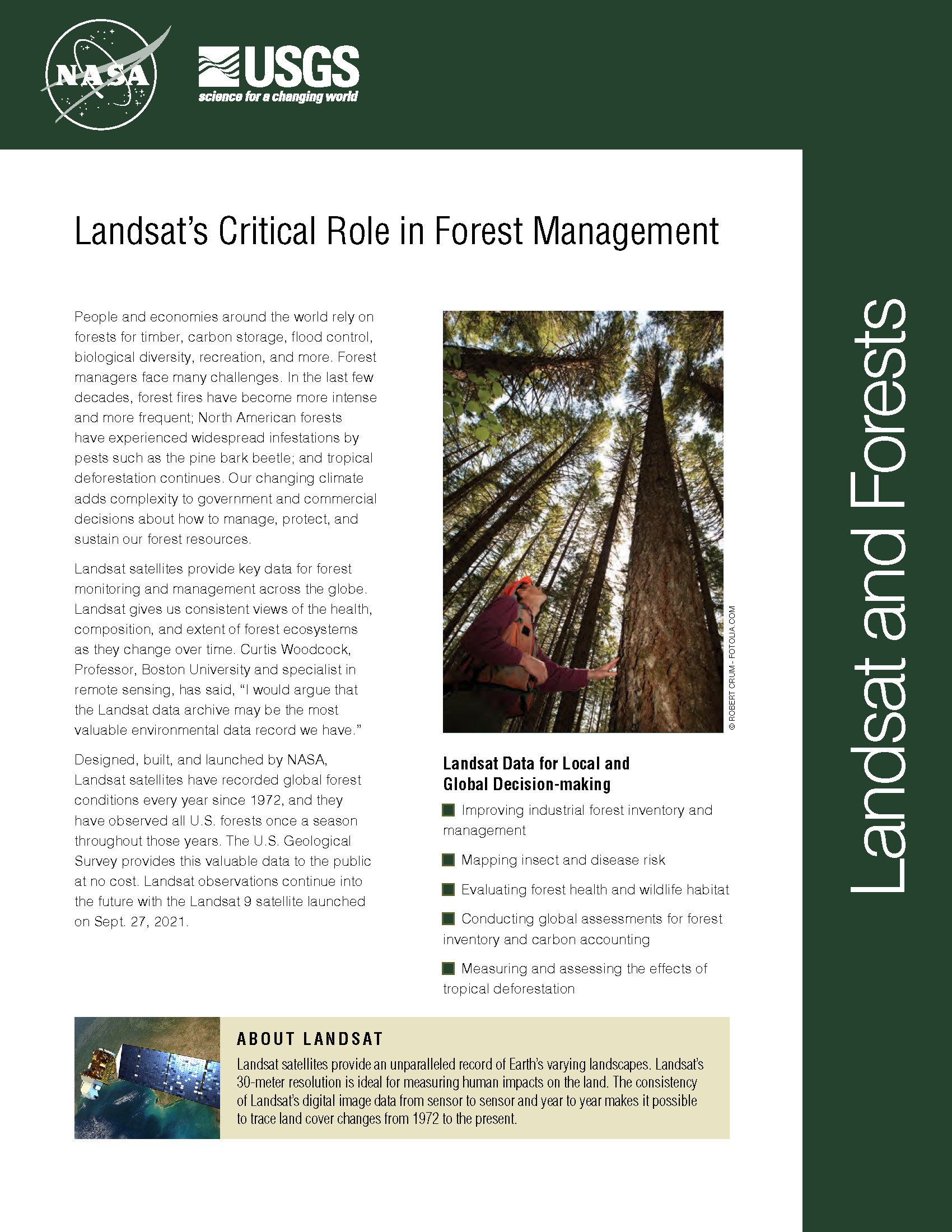Landsat’s Role in Managing Forests
People and economies around the world rely on forests for timber, carbon storage, flood control, biological diversity, recreation, and more. Forest managers face many challenges. In the last few years, forest fires have become more intense and more frequent; North American forests have experienced widespread infestations by pests such as the pine bark beetle; and tropical deforestation continues. Our changing climate adds complexity to government and commercial decisions about how to manage, protect, and sustain our forest resources. Landsat satellites provide key data for forest monitoring and management across the globe. Landsat gives us consistent views of the health, composition, and extent of forest ecosystems as they change over time. Curtis Woodcock, Professor, Boston University and specialist in remote sensing, has said, “I would argue that the Landsat data archive may be the most valuable environmental data record we have.” Designed, built, and launched by NASA, Landsat satellites have recorded global forest conditions every year since the 1970’s, and they have observed all U.S. forests once a season throughout those years. The U.S. Geological Survey provides this valuable data to the public at no cost. Landsat observations will continue into the future with Landsat 8.

Landsat Enables World’s Most Comprehensive Mangrove Assessment
By Laura E.P. Rocchio The most definitive map of Earth’s mangrove forests has been created with Landsat data. A group of scientists, led by Chandra Giri from USGS-EROS, has calculated
Study Using Landsat Finds Amazon Storm Killed Half a Billion Trees
A single, huge, violent storm that swept across the whole Amazon forest in 2005 killed half a billion trees, according to a new study funded by NASA and Tulane University.
Deforestation Driven by 21st Century Urbanites
• A recently published Nature Geoscience article by Ruth DeFries et al. reveals that urban pressures (for food and resources) have replaced subsistence farmers as the leading driver of tropical deforestation this
GEO Announces New Annual Assessments of Forest Carbon
Source: Group on Earth Observations “The only way to measure forests efficiently is from space,” Group on Earth Observations (GEO) director, José Achache said referring to the group’s goal to make
New Landsat-Based Maps of Complex Caribbean Islands Reveal Conservation Opportunities Where Sugar Cane Cultivation Has Become Unprofitable
A new set of vegetation maps for five islands of the Caribbean Lesser Antilles, including Grenada, St. Kitts, Nevis, St. Eustatius and Barbados, appear in the June issue of the
Landsat Helps Rain Forest Protection Work in Peru
Contributor: Gregory Asner A new regional study shows that land-use policies in Peru have been key to tempering rain forest degradation and destruction in that country. Scientists at the Carnegie Institution’s


